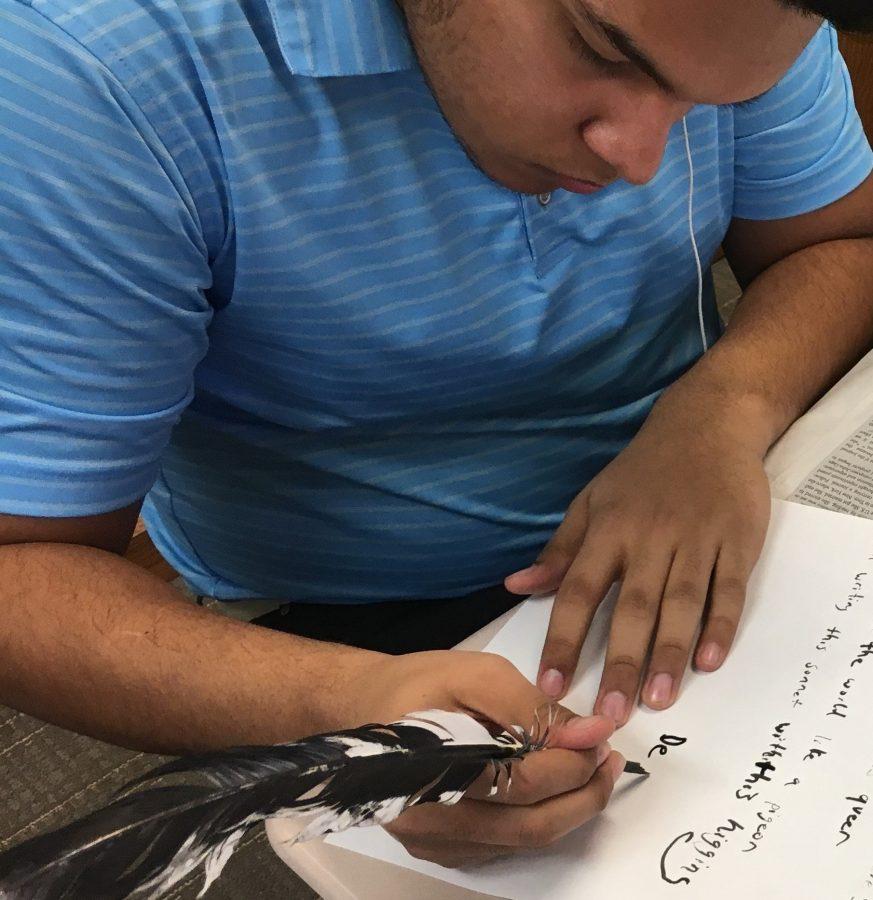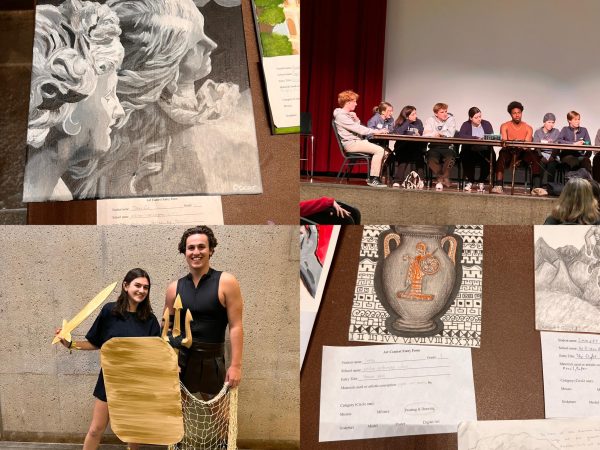English Students Transported By Their Quills
Students whittling feather quills, testing out calligraphy methods, and wracking their brains for rhymes is not the typical scene of an AP English 12 classroom. But English teacher Ryan Tyree believes this unexpected approach, and a reach back into history, will leave a lasting impression on his students.
“We are trying to simulate the skills and the techniques that poets would have actually had to master four hundred years ago,” said Mr. Tyree, who tasked his AP students with writing a sonnet with their own handmade quill as part of their poetry study. “Hopefully they will care more about the poem because they wrote it with something they made.”
The class has been studying poetry since the return from winter break. They are working their way through the oldest poetry in the English language to the most recent. They just finished the Renaissance section, and will soon cover the Metaphysical and Romantic periods.
The students cannot use their computers or phones, creating a more authentic experience, according to Mr. Tyree. “The students will feel a greater personal connection to this poem than they would if they had simply utilized the computer, utilized rhyme dictionary, utilized typing skills that are already in their memory or just hand writing skills,” he said.
Mr. Tyree wanted to do this project for a while, and tested it out in a class he taught this summer. Once the students from the summer class finished their poems, Mr. Tyree asked how they would feel if he took the poems home and graded them with a red pen. Immediately the kids protested, said Mr. Tyree. “If you can get kids to commit to their piece like that I feel like I have done my job. If they want to protect it.”
The English department bought natural goose feathers, Xacto knives to carve and whittle the feathers, sandpaper to smooth the shaft of the quill, and inkpots. Once the students create their calligraphy quill, they are free to experiment with how much ink to use, how hard to press, and how to hold the quill for the best effect.
Molly Zawacki ’17 loves the project, but thinks it is difficult. “The hardest part is not putting too much ink on the feather because then you just end up with big blobs on the page,” she said.
“Once you get in the zone it’s actually kind of fun, but making the quills themselves is like a challenge from hell,” said senior Anna Wilinsky. She said it took her fourteen tries to get the tip right.
The drafting process is extensive. Students will practice and draft their poem six or seven times before using the fancier paper for the final product. Using the quill is difficult and the work is meticulous, according to the AP English students. “By relearning how to physically write with this new instrument in a sort of different way then they normally do, it slows them down and hopefully they give a little bit more care and attention to each word and each line,” said Mr. Tyree.
The quill project has replaced the Poetry Out Loud project, a competition where students memorize and perform a poem for the class. Because of the performance aspect of Poetry Out Loud, Mr. Tyree believes not all students loved it. He thinks he can reach a broader range of student with the quill project because it is less public. “You put a pen in someone’s hand and just let them privately sit there and wrestle with it,” he said.
Mr. Tyree hopes students will make memories constructing a quill pen and relying solely on their brain and hands to produce their work. “I feel like these are the times that three to four years later, ten years later, a kid is going to be able to remember as opposed to some discussion about The Stranger or some discussion about Hamlet,” he said. “I feel pretty strongly that it is going to leave a lasting impression,”
Wilinsky added, “It was a bonding experience– you could say the feathers were flying!”
Sophia is a six-year senior from Northampton, MA. She likes to play lacrosse and talk to her sister in a funny voice.













